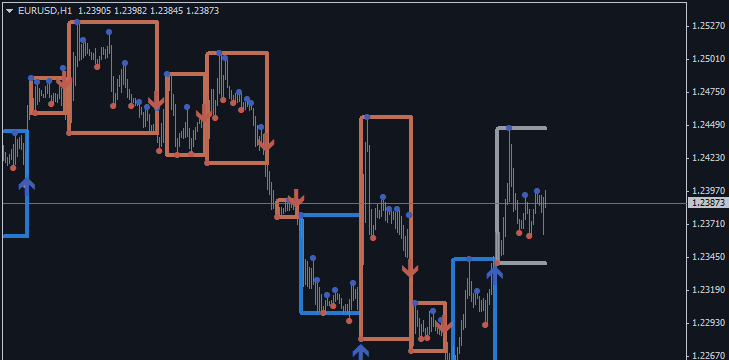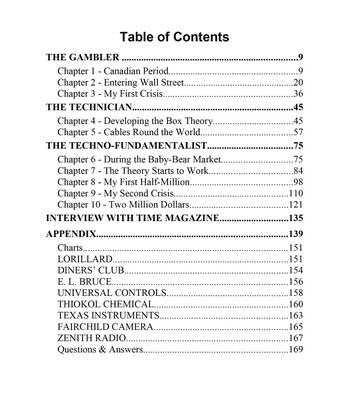
SOMETHING TO READ - How I Made $2,000,000 in the Stock Market
How I Made $2,000,000 in the Stock Market
by
Nicolas Darvas


Hungarian by birth, Nicolas Darvas trained as an economist at the University of Budapest. Reluctant to remain in Hungary until either the Nazis or the Soviets took over, he fled at the age of 23 with a forged exit visa and fifty pounds sterling to stave off hunger in Istanbul, Turkey. During his off hours as a dancer, he read some 200 books on the market and the great speculators, spending as much as eight hours a day studying.Darvas invested his money into a couple of stocks that had been hitting their 52-week high. He was utterly surprised that the stocks continued to rise and subsequently sold them to make a large profit. His main source of stock selection was Barron's Magazine. At the age of 39, after accumulating his fortune, Darvas documented his techniques in the book, How I Made 2,000,000 in the Stock Market. The book describes his unique "Box System", which he used to buy and sell stocks. Darvas' book remains a classic stock market text to this day.
Customer review:
1. It's very readable.
The author describes his investing style as a narrative. It takes you through his investing evolution step-by-step, detailing his actual experiences. This made it very easy to follow, and also more real.
2. It emphasizes both technical and fundamental criteria.
This is critical to good investing. Both areas tell a story. This is the best book I've seen that details an investors journey through to discover that both matter, and integrate the two pictures.
3. It makes for a better system, in some ways, than Investor's Business Daily.
I noticed other reviews that noted the similarity between IBD and Darvas. While they are similar styles, there are some key differences. First, Darvas looks for companies that have a good high-growth STORY, but does not necessarily require the company to have high-growth earnings. He doesn't look at ROI, earnings growth rate, etc. (at least not in this book)
The potential advantage of this approach over IBD is that sometimes stock prices reflect earnings potential BEFORE actual earnings show up. Alternatively, sometimes stock prices reflect perceived earnings declines BEFORE the actual decline in earnings.
4. His system makes sense from a technical standpoint, but is actually harder to do than you might think.
I like his system because it's technically sound. For example, it emphasizes taking small losses and being patient for large gains (among many other things).
Don't be fooled, however . . . it's trickier to follow that you think. Not because his system doesn't work, but because it requires a lot more discipline that you might imagine.
In his main year of gains, he records investing in only a few stocks. Also, he waits for a bull market. How many of us are really patient enough to do these two things. In reality, not many. It's just very difficult in practice.
Also, he keeps an investing journal, something which I still struggle to do, but which is essential for growth. Most people can't do this on a daily basis.
In all, it's a great book for the average investor to read and reread. I highly recommend it.


